It’s been awhile since my last post, but this time I have a better excuse than the usual work stuff. I’ve begun a book proposal, and it’s not about Galveston.
For almost a year, I’ve wanted to do a deep dive into not simply the history and future of the engineering feats intended to protect Galveston from the elements, but the economic costs and benefits and, having a sense of what’s coming down the pike, the ethics of asking future generations of non-Galvestonians to pony up.
That still sounds to me like a good book. But to do it justice, I would have to learn a hell of a lot more than I know now about mechanical engineering and economics, and neither subject is in my wheelhouse.1
So I’ve decided to do something radical and pitch a book about something I actually know a little about. A few weeks ago I obtained permission from the widow of my subject to plow ahead, and in a couple months I’ll be travelling to Nashville to visit her and do research. I plan to finish the proposal by the end of February 2025. Until then, I should probably keep my mouth shut and my head down.
The other thing I’ve been doing of late is working on our house. Some of you know that we live in a very old one, an elevated cottage built in 1907, and we’re inordinately and irrationally fond of it. It’s not in the same league as the Victorian beauties a few blocks away, and it’s 25 years younger than the super-cute shotgun next door.
But we dote on it.
Doting takes time, and the latest project, like approximately 100% of my projects, took more than I’d bargained for. The ordeal reminded me why so many folks decide, very sensibly, not to live in an old house, and why, for now at least, the rewards for us outweigh the costs.
The original idea for this project was simple: Paint the dining room. Sure, we’d have to move hundreds of books and the shelves they sat on, and there were over two dozen spackleable divots in the walls, and we had four multipaned windows with flaking sashes and sills that were last painted and caulked when Moses wore short pants. But, in the main, simple.

Then, Flor noticed that a portion of the thin 1940s-era drywall was becoming detached from its backing. That’s when the trouble began.
When we pulled back the drywall, we saw the solid wood sheathing and tiny fragments of the cloth wallpaper that first covered the walls in 1907.
The sheathing was rough and not intended for display, but it had a rustic charm.
So we had an idea: What if we covered one wall in something that evoked the wall’s bones, minus the ugly wallpaper? We decided on shiplap.
I’ll spare you the angst from the road bumps that had me wishing I lived in the high-rise condo that I could see from that window: finding pieces with uniform laps, making endless trips downstairs to correct our cuts, discovering that the room was sagging toward the middle, which meant that we couldn’t simply lay the top boards along the ceiling. But we kept on. Five weeks later, it looked like this:
A professional crew would have knocked this out in a fraction of the time, but we saw the work through, and the result was a wall with not only sweat but heart equity. It means more to us now than if pros had done the work.
But ye olde house is not for everyone. The costs of living in an old home include the month-to-month costs of cooling, heating, and insuring it, and the periodic, semi-predictable, and unavoidable body blow of a major repair. If I’d known before we bought this place what we’d spend on it in our first five years here, I would have thought twice.
That’s because I’m like that. I’m a champion second-guesser. But I’ve never second-guessed our decision to live here. We love this old, battered place, and aside from a couple bad contractors, we haven’t regretted a dime of what we’ve spent.
Why? I’ve asked myself that question more than once, because the answer wasn’t plain. Here’s what I’ve come up with.
Old things > new. I mean this in an a priori sense. Age matters because endurance matters, and things that have endured have a leg up on things that haven’t. Before we start to measure them on their merits, we owe old things that continue to serve their original purpose some preliminary respect. If you don’t believe me, ask Guy Clark. Stuff that holds up is the essential criterion in one of his best love songs, “Stuff That Works.”
But houses that hold up matter in ways that, say, push reel mowers don’t. Six generations have lived in our house. Gus and Mary Weber lived a few blocks from here in Galveston in 1900, survived the Great Storm, and married in 1901. They had this house built in 1907, on a site where an earlier home had been destroyed and its owner killed by the 1900 hurricane.
Gus and Mary raised three children here. Gus died of a heart attack here in 1940. His enormous workbench lives on in my workshop. Mary continued to live here until she was forced to move to a nursing home in 1978. She died in 1981 at 99.
After Mary passed, the house became a rental property for 20 years and fell into disrepair. A policeman who lived here in the 1980s held at gunpoint an intruder who’d kicked in the front door. The door was original to the house. It’s still here, minus a foot-long hunk of decorative wood where the intruder’s foot landed.
In 2000, a medical school student and his wife bought the house. Originally, the house was so neglected that she’d refused to consider it. Once inside, they discovered its good bones: both fell in love with it, and they began the long, hard work of bringing the house back to life. Before they left in 2009, they wrote a long history of the house. Today, they keep a 1910 photograph of the house framed in their kitchen. When they visited in 2022, they gave us the same print. It’s in our hallway.
Another physician bought the house in 2009 and kept it as a vacation home for 10 years until his wife became ill and they decided to sell. She died on the date we were scheduled to close, in 2019. He returned to the house in 2021 and stopped in to visit.
In a real sense, all of these people live here still. The house keeps them alive. I can’t help but think of another love song, Jimmy Webb’s “If These Walks Could Speak.” But clearly, the house left its mark on the people, too.
Of course, nothing lasts forever, and Galveston’s climate and weather underscore that fact. All things must pass. It’s silly, not to mention spiritually ruinous, to become too attached to things. But love isn’t the same thing as attachment, even if that sort of love is beyond me.
I recently read Jennifer Egan’s novel A Visit From the Goon Squad. It turns out – spoiler alert for my fellow slow-to-the-point readers – that “goon squad” is Egan’s metaphor for time.
Egan wrote about a wide cast of characters at different points of their lives and how time abrades them, often with unpredictable results. Things are also susceptible to abrasion, but the effects are much more predictable and, with some exceptions in the organic world, less encouraging.
Things that hold up, houses that live longer than most, possess an admirable defiance in the face of something that nothing escapes. They deserve our respect, as do the people who designed and built them. The houses, like the people, will eventually die. In the meantime, we can relish the minor miracle that, like the spirits of those who lived within their walls, they are still here.
To paraphrase Tony Soprano: I was an economics major for one and half semesters, so I know all about Keynes.






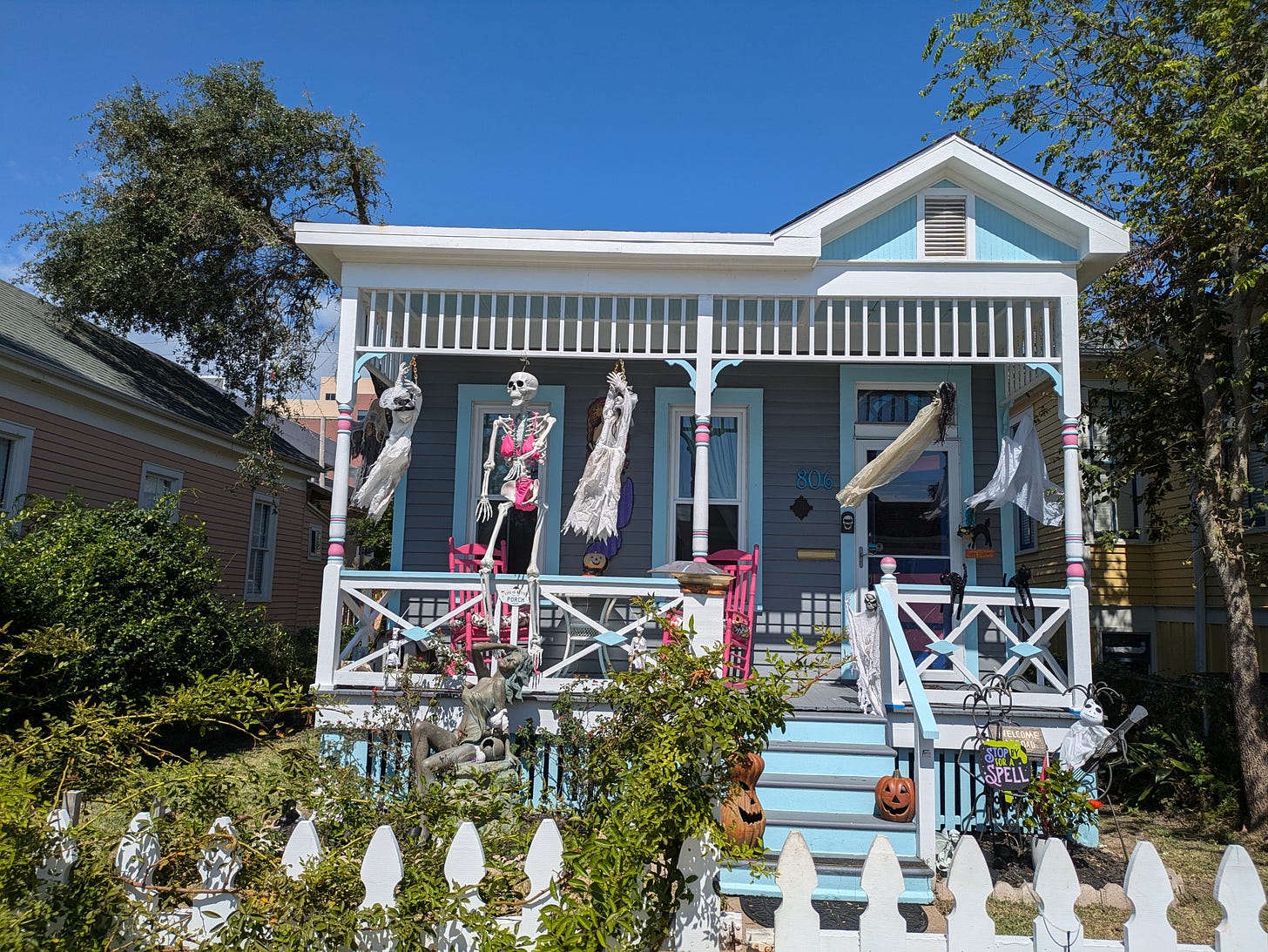
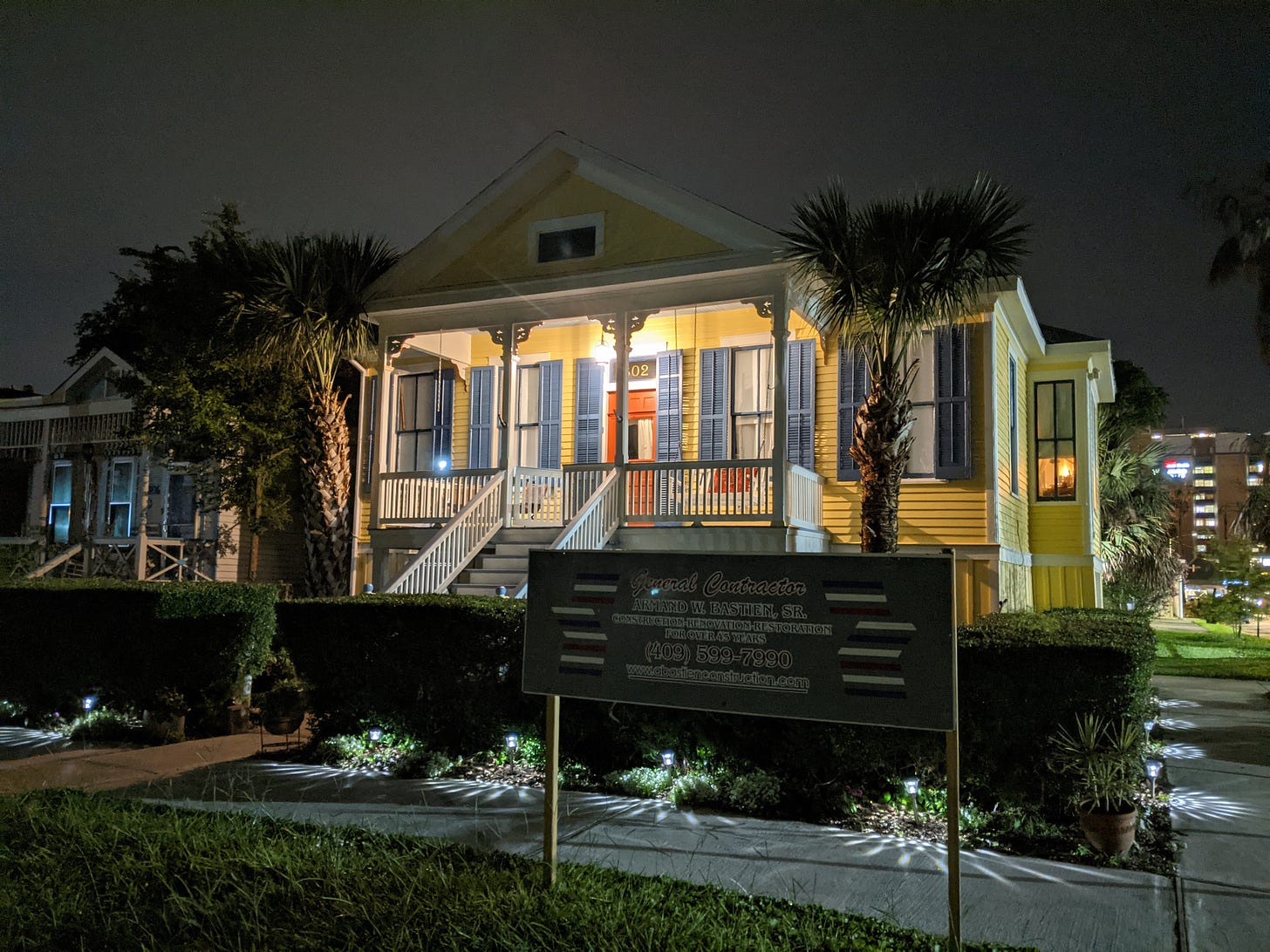
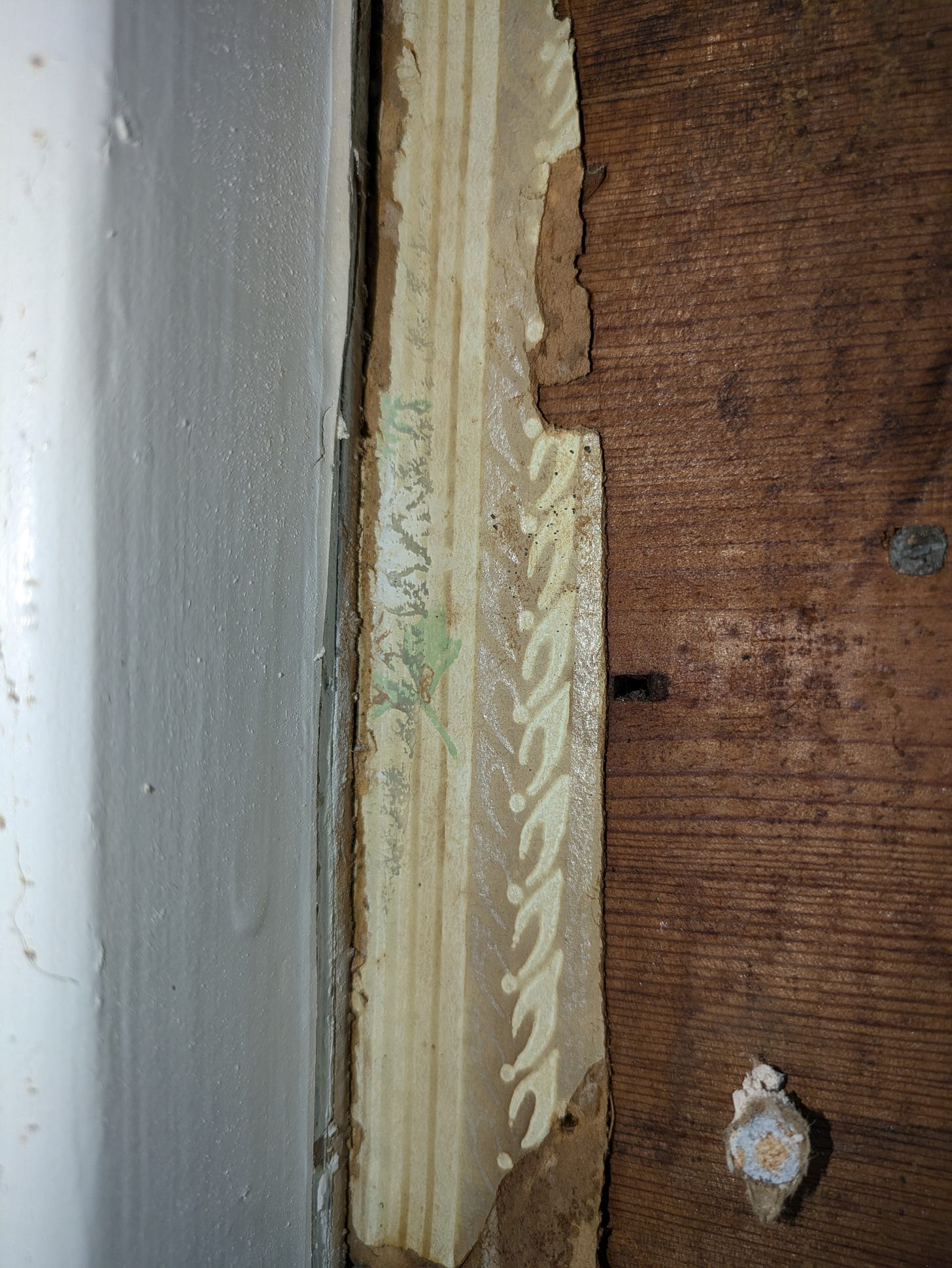
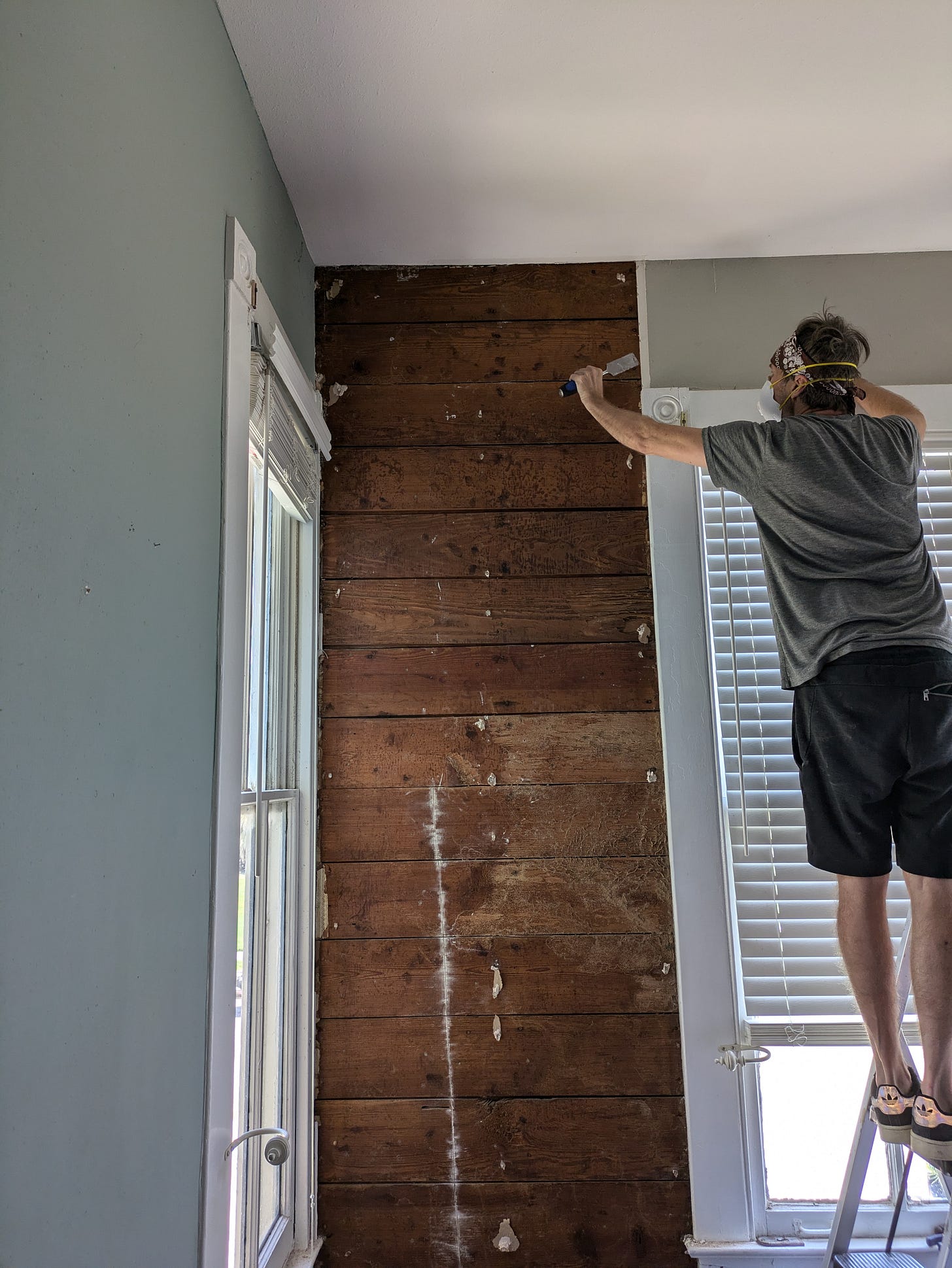

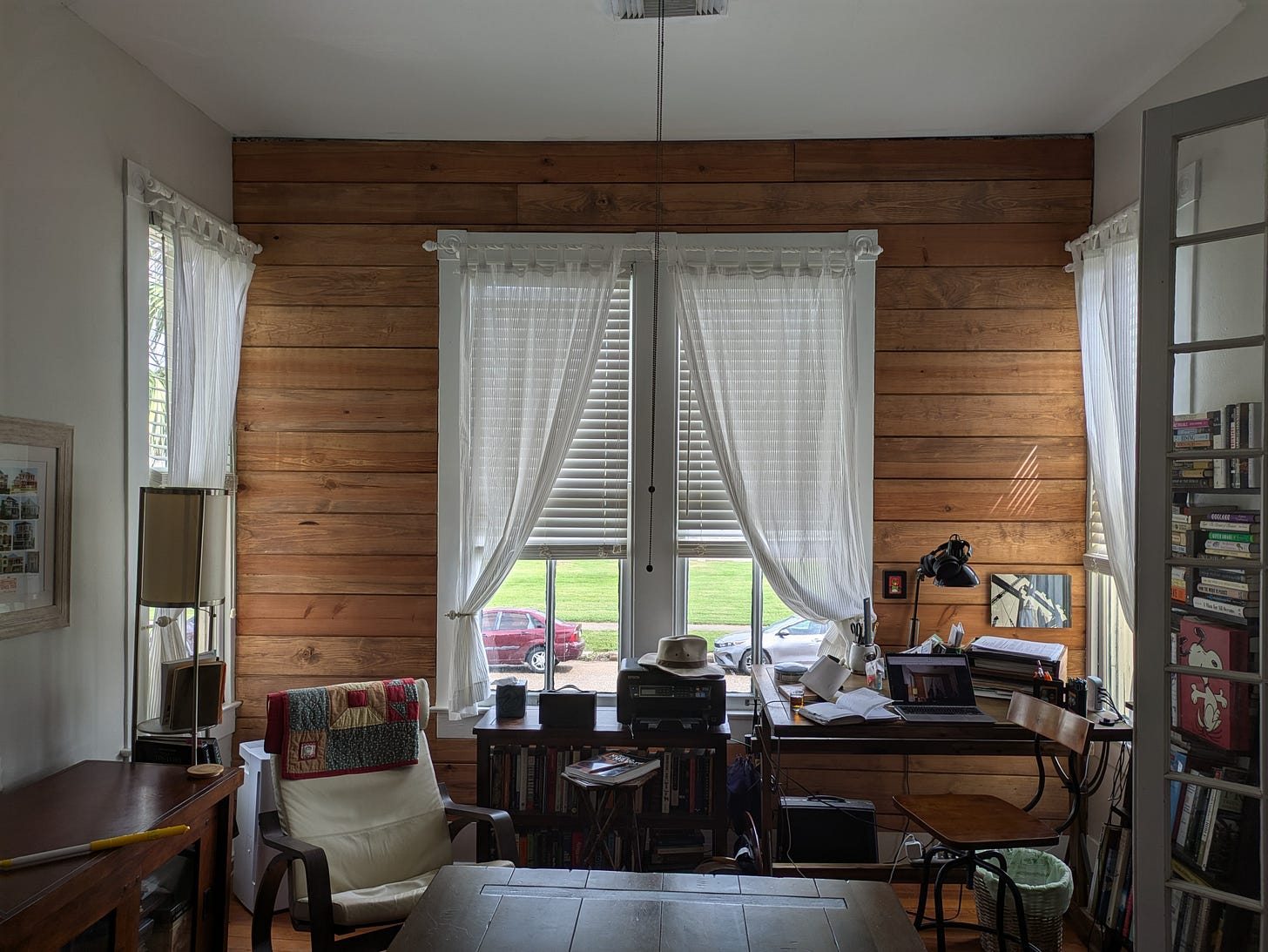
Lovely post, dad. And the wall looks great!